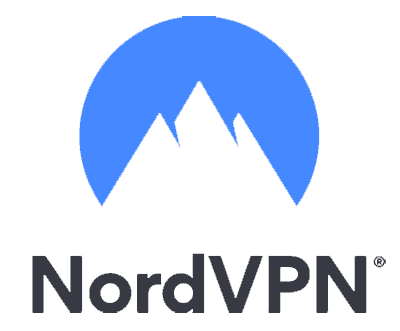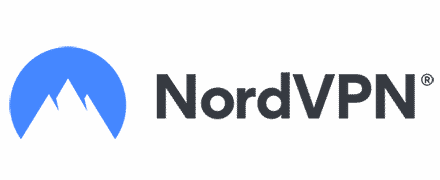How To Set Up NordVPN on DD-WRT Router (Updated 2026)
DD-WRT is a custom router firmware that you can install on your router. The DD-WRT firmware’s ability to add more functionality and control to routers is why some prefer it over native firmware. Using a VPN on a DD-WRT router further increases its security. This piece will examine how to configure NordVPN, a premium VPN service provider, on a DD-WRT router.
Setting Up NordVPN on DD-WRT Router
You can set up NordVPN on a DD-WRT router in two ways.
1. Buy a preconfigured DD-WRT router. Here you get a router that has NordVPN preinstalled on it.
2. Configure NordVPN manually on a DD-WRT router. You’ll need some technical knowledge. Don’t worry if you don’t have any technical skills. All you’ll need to do is follow this guide accurately.
Setting Up NordVPN on a Preconfigured DD-WRT Router
Preconfigured routers are the easy way out if you don’t want to deal with the manual configuration process. With a preconfigured DD-WRT router, you don’t have to worry about configuring NordVPN on it. The only time you might need to access your DD-WRT router’s control panel is if you want to change servers. FlashRouters is a popular service that works on preconfigured DD-WRT routers and makes them available to VPN users that want to buy.


Get up to 74% off now
Setting Up NordVPN Manually on DD-WRT Router
Manually configuring a DD-WRT can be cumbersome and confusing if you don’t have the technical skills and have not done it before. First, you have to confirm that it is compatible with OpenVPN. This guide will not work for you if it’s not.
OpenVPN is the most widely used protocol because of its security and reliability. Your router’s manufacturers will usually indicate in the user manual all the functionalities, including if it supports OpenVPN or not. You can always visit the NordVPN website to check the router models it supports. Now let’s take a look at the configuration process in setting up NordVPN on a DD-WRT router via OpenVPN.
1. The first step involves getting a NordVPN subscription if you don’t already have one. Head over to the NordVPN website and click on the “Get NordVPN” bar. Select a subscription plan that you can afford and click on the “Continue to Payment” bar. Select your payment method, create an account, and complete the process. At the end of this process, you should have a Nord Account.
2. Next, you need to download the OpenVPN configuration file(s) of the server you want to utilize. You can check, select and download the TCP/UDP .ovpn file of the server or let NordVPN’s algorithm recommend a server for you.
3. Now, you need access to your DD-WRT router’s administrative panel. Launch a web browser and input your router’s IP address. Check your user manual if you don’t know it. Most routers use either 192.168.1.1 or 192.168.0.1. Next, you need to log in with your admin username and password. Most routers use “admin” for both the username and password. You can find more information in your user manual.
4. Once you’re in the admin panel, select the “Setup” tab and click the “Basic Setup” tab under it. In the “Network Address Server Settings (DHCP)” section, input the following in their respective fields:
Static DNS 1: 103.86.96.100
Static DNS 2: 103.86.99.100
Static DNS 3: 0.0.0.0 (default)
Use DNSMasq for DHCP: Check this box
Use DNSMasq for DNS: Check this box
DHCP-Authoritative: Check this box
Click the “Save” button, then the “Apply Settings” button afterward.
5. Next, click on the “IPV6” tab. In the “IPv6 Support” section, click the “Enable” radio button on the “IPv6” section. Click the “Save” button, then the “Apply Settings” button afterward. This step is to prevent IPv6 leaks
6. At the top of the panel, select the “Services” tab and click the “VPN” tab below it. In the “OpenVPN Client” section, click the “Enable” radio button beside “Start OpenVPN Client.”
7. Input the following details in their respective fields:
Server IP/Name: Input the hostname of the VPN server you downloaded in step 2 above (e.g., us936.nordvpn.com)
Port: 1195 (or 443 for the TCP protocol)
Tunnel Device: TUN
Tunnel Protocol: UDP (or TCP)
Encryption Cipher: AES-256-CBC
Hash Algorithm: SHA-512
User Pass Authentication: Enable
Username: Your VPN service username
Password: Your VPN service password
Advanced Options: Enable
TLS Cipher: None
LZO Compression: Disable
NAT: Enable
You can find your NordVPN service credentials in your Nord Account dashboard under the “Advanced configuration” section.
8. If you can’t find the “Username” and “Password” fields in step 7 above, navigate to “Administration” then “Commands” and input the following:
echo “YOURUSERNAME
YOURPASSWORD” > /tmp/openvpncl/user.conf
/usr/bin/killall openvpn
/usr/sbin/openvpn –config /tmp/openvpncl/openvpn.conf –route-up
/tmp/openvpncl/route-up.sh –down-pre /tmp/openvpncl/route-down.sh –daemon
Replace “YOURUSERNAME” and “YOURPASSWORD” with your NordVPN service credentials and click “Save Startup,” and return to the “VPN” tab in step 7 above.
9. Move on to the “Additional Config” box and input the following:
remote-cert-tls server
remote-random
nobind
tun-mtu 1500
tun-mtu-extra 32
mssfix 1450
persist-key
persist-tun
ping-timer-rem
reneg-sec 0
#log /tmp/vpn.log
#Delete `#` in the line below if your router does not have credentials fields and you followed step 8
#auth-user-pass /tmp/openvpncl/user.conf
10. Use a text editor to open the OpenVPN configuration file you downloaded in step 2 above. In the contents of the file, navigate to the <ca> tag section and copy the contents between the <ca> and </ca> tags (don’t copy the tags). Paste it in the “CA Cert” field in your OpenVPN configuration settings.
11. Go back to the file and navigate to the <tls-auth> section. Copy the text between the <tls-auth> and </tls-auth> tags (don’t copy any lines that begin with “#”). Paste it in the “TLS Auth Key” field.
12. Click the “Save” button, then the “Apply Settings” button.
13. To confirm that the VPN is working, select the “Status” tab, then the “OpenVPN” tab. You should see “Client: CONNECTED SUCCESS” under the “State” section.


Get up to 74% off now
Advantages of Using NordVPN on DD-WRT Router
The perks of using NordVPN on DD-WRT router include:
1. Security and Privacy
When it comes to security and privacy, NordVPN is the VPN you want to use. Apart from being Panama-based, its No-Log Policy has passed through the rigors of an audit. It has some of the most robust security features you will find in a VPN: high-grade encryption, Double VPN, Onion over VPN, perfect forward secrecy, Split Tunneling, and many more. You will have zero worries using NordVPN if your concern is security and privacy.
2. Circumvent Censorship and Geo-Restrictions
NordVPN’s obfuscated servers are the reason it is popular among people looking to bypass internet restrictions in their countries. Your ISP will not be able to see that you’re using a VPN. Its server network is also a plus for anyone looking not to be held back by any site from watching different content worldwide.
Conclusion
Using NordVPN on a DD-WRT router certainly has several benefits. While the configuration process might be complex for some people, precisely following this guide allows you to have a pleasurable experience protecting your devices and watching international shows on them.